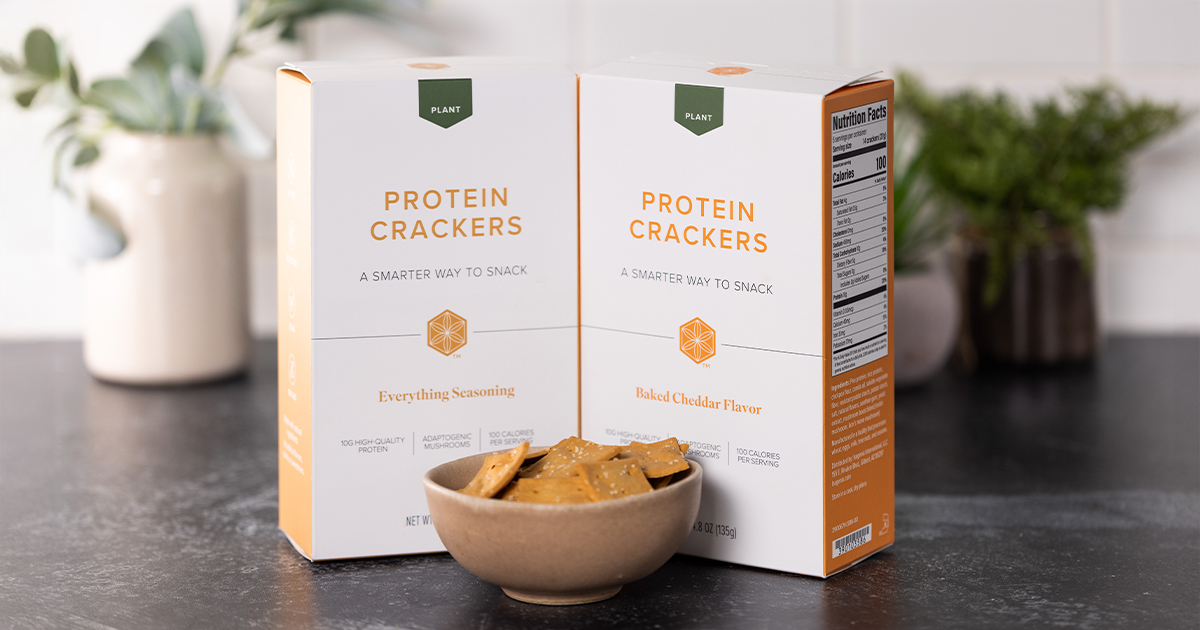On Shake Days, breakfast and lunch are practically no-brainers. You have the choice of Creamy Dutch Chocolate, Creamy French Vanilla, or Strawberry Cream IsaLean® Shake to blend and drink. The difficulty comes when you have to plan your third meal that won’t undermine your Shake Day.
During our science talks at Celebration 2015, our Research and Science team talked to many individuals who struggled with either meeting their calorie targets or coming up with tasty and varied third-meal options. For instance, most people responded with the question about what they eat for their third meal with “chicken breast and broccoli.” While that’s a nutritionally excellent choice, there are a wide variety of nutrient powerhouses you can incorporate into your third meal option to prevent any dietary boredom.
Here are a few steps to a successful third meal:
- First, rotate your food selections to get a wide variety of nutrients such as the macronutrients (fat, protein, and carbohydrates) and micronutrients (vitamins and minerals).
- Second, eat what’s in season. Not only do items like fruits and vegetables have a higher nutrient content since they were harvested at peak season, they also generally cost less!
- Third, choose frozen seafood, vegetables, and fruits when shopping. Quite often, frozen varieties have a higher nutrient content since they are quickly obtained and frozen. This ensures low amounts of oxidation that can reduce vitamin content, which routinely occurs during long transit periods and time sitting in the produce aisle.
- Finally, keep your plate colorful and full of flavor. Foods like pink salmon, dark green kale, orange sweet potatoes, and red strawberries are bursting with flavor, vitamins, minerals, and phytochemicals—all functioning to keep your body working properly.
By following these simple guidelines, you can have a third meal that is nutrient dense, rich in phytochemicals, high in fiber, low in calories, and great tasting. Let’s review some major food choices…
Animal-Based Protein Sources:
As mentioned above, you should select a variety of protein-rich foods to improve nutrient intake and health benefits. While individual needs will depend on age, sex, and level of physical activity, a good rule of thumb is 1.4-2.0 grams of protein per kilogram of bodyweight. Interestingly, most Americans already eat enough protein, but they need to make leaner and more varied selections of these foods. Excellent choices include seafood low in heavy metals and high in omega-3 fatty acids, lean beef, and even game meats.
- Chicken breast and thighs
- Turkey breast and thighs
- Lean cuts of beef
- Lamb
- Bison
- Elk
- Cod
- Salmon
- Trout
- Flounder
- Shrimp
- Scallops
- Eggs
- Yogurt (opt for Greek yogurt)
- Cottage cheese
- Cheese
Fruits and Vegetables:
If weight loss is your goal, use fruit more sparingly and consume more green leafy vegetables. Fruits that are lower in calories but loaded with nutrients include blueberries, strawberries, blackberries, apples, watermelon, prunes, and grapefruit. Fruit higher in carbohydrates needed for those exercising intensely include bananas, mangos, papaya, cantaloupe, and pineapple.
Green leafy vegetables offer both water- and fat-soluble vitamins that your body needs to thrive. Eat asparagus, kale, broccoli, spinach, cucumbers, Swiss chard, and even sea vegetables like seaweed for a surge of vitamins. For those requiring a higher energy intake, sweet potatoes, onions, beets, and avocados are excellent choices. Also, incorporate spices, herbs, mushrooms, garlic, and lemon into your cooking for maximal flavor and no calories.
A word of caution! While juicing and dried fruits appear healthy, it can be easy to consume far too much and end up overdoing sugar intake. For example, a small box of raisins has 25 grams of sugar! A drink produced from juicing fruits and vegetables can have upwards of 40 grams of sugar! While some sugar is OK, the sugar in these fruits added to the rest of your diet will not help your weight-loss goals.
Vegetables:
- Asparagus
- Avocados
- Beets
- Bell peppers
- Broccoli
- Brussels sprouts
- Cabbage
- Carrots
- Cauliflower
- Celery
- Collard greens
- Corn
- Cucumbers
- Eggplant
- Fennel
- Garlic
- Green beans
- Green peas
- Kale
- Leeks
- Mushrooms
- Mustard greens
- Parsnips
- Olives
- Onions
- Potatoes
- Lettuce
- Seaweed
- Spinach
- Squash
- Sweet potatoes
- Swiss chard
- Tomatoes
- Turnip greens
Fruits:
- Apples
- Apricots
- Bananas
- Blueberries
- Cantaloupe
- Cranberries
- Figs
- Grapefruit
- Grapes
- Kiwi
- Lemons
- Limes
- Oranges
- Papaya
- Pears
- Pineapple
- Plums
- Prunes
- Raisins
- Raspberries
- Strawberries
- Watermelon
Grains, Nuts, Seeds, and Legumes:
While grains, nuts, and seeds are high in heart-healthy poly- and mono-unsaturated fats, fiber, minerals, and protein, those who are seeking weight loss need to consume grains insmaller portions. However, nuts and seeds can be used for weight loss because they supply the body with fat that is essential to optimizing health and metabolism. The negative view of dietary fat is starting to change as the people recognize the strong research showing that a balanced fat intake is needed for proper health. Include nuts like almonds, cashews, and flaxseeds for maximum benefit – just watch the extra calories.
Grains, nuts, seeds, and legumes are generally more energy dense and are perfect for those looking to gain muscle mass or support intense exercise. For example, grains like rice, barley, and quinoa offer an excellent fuel source for runners and intense weight lifters to restore glycogen stores after training.
Vegetarians benefit from these foods more than most as they often lack complete proteins in their diets. Often vegetarians run into the issue of supplying the body with adequate amounts and all the essential amino acids that combine to form protein. Combining legumes and grains together can easily remedy this issue.
Grains:
- Barley
- Brown rice
- Buckwheat
- Millet
- Oats
- Quinoa
- Rye
- Whole wheat
Nuts, Seeds, and Legumes
- Almonds
- Cashews
- Flax seeds
- Peanuts
- Pumpkin seeds
- Sesame seeds
- Walnuts
- Black beans
- Dried peas
- Garbanzo beans
- Kidney beans
- Lentils
- Lima beans
- Lentils
- Miso
- Navy beans
- Pinto beans
- Tofu
So, how can you use this information? We hope you will be more open to different foods and use recipes to make your third meal more than just “chicken breast and broccoli.” Below is one of our favorites…
Chipotle Turkey Chili:
Ingredients:
- 2 lbs lean or extra lean ground turkey
- 2 (14.5 oz) cans fire roasted diced tomatoes
- 1 can kidney beans, drained and rinsed
- 4 cups low-sodium beef broth
- 1 large red onion
- 3 cloves garlic, diced
- 1 can chipotle peppers in adobo sauce, diced
- 2 tbsp chili powder
Directions:
- Brown turkey in large pot on medium high, add chili powder.
- Add onion and garlic and cook with turkey until onions are soft.
- Add kidney beans, chipotle peppers, and beef broth.
- Cover and cook at a low simmer for about 1 hour.
- Remove lid and let simmer for 5-10 minutes.
- Taste, season with salt and pepper if necessary.
Makes 6 servings
Per serving: Calories: 355 Protein: 35g Carbs: 25g Fat: 12g Fiber: 12g
NOTE: If more carbohydrates/calories are needed, serve chili over ½ cup to 1 cup of steamed brown rice or other whole grain.





